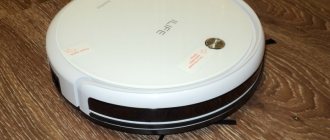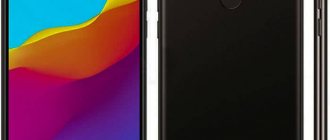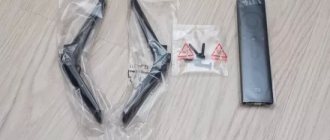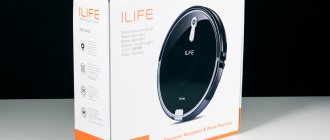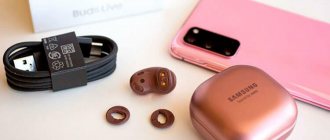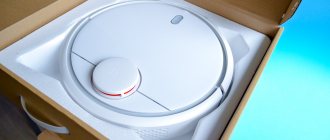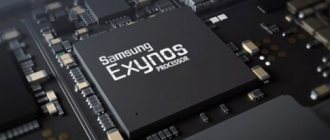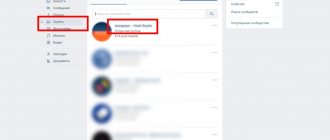Apartment cleaning equipment has long been firmly established in our daily lives.
Manufacturers are racing to add more and more new functions and capabilities to such devices, while trying to reduce their dimensions and simplify their use.
Just 10-15 years ago, robotic vacuum cleaners seemed like a very expensive and impractical fairy tale, but today anyone can choose a model that suits their characteristics, size and even color .
V7s Plus robot vacuum cleaner model - what are its features and why is it attractive.
Page navigation:
Model features
For your information! The main difference between the model and its analogues is that this robot vacuum cleaner can not only carry out dry and wet cleaning of a room, but also do both cleanings at the same time.
In this case, there is no need to additionally change containers or change programs .
At the same time, the robot
can easily overcome obstacles in the form of thresholds and carpets.
And if it needs recharging or after cleaning is completed, it is automatically sent to the base.
The vacuum cleaner is equipped with a cyclone filter , that is, the dust bag is replaced by a removable container.
It is possible to program the operation of the device by day of the week.
The model is controlled from a remote control and has several delay start options.
It is worth noting! This will undoubtedly be appreciated by the owners: the vacuum cleaner can carry out cleaning at any time in the absence of the owner in accordance with the program parameters.
ILIFE V7s Pro - robot vacuum cleaner with wet cleaning function
Hello everyone, just recently I talked about our acquisition – the iLife A6 robot vacuum cleaner. As it turned out, this is a very useful thing in the family. Returning home with great pleasure after work to a clean apartment, I tell my wife that I have time to do everything myself: to go to work and vacuum the apartment (after all, I bought the device, and the initiative was mine). But that's not what this is about. When our parents came to visit us, at first they reacted to the purchase with some skepticism, however, after a few weeks they asked to purchase a similar unit for them. Of course, they wanted to buy a similar model, but my wife and I convinced them to look at a model with a wet cleaning function, namely the iLife V7s Pro. My parents don’t have any livestock, because we visit them periodically with the whole family (including the dog). In general... Specifications:
- Brand: ILIFE
- Types of Cleaning Products: Vacuum Cleaner
- Application: Dry, Stripping
- Feature: Self-charger
- Cleaning modes: Automatic cleaning mode, obstacle cleaning mode, deep cleaning mode, delayed cleaning mode
- Cleaning area (sq.m.): about 80 – 220
- Floor types: Wood floor
- Noise (dB): less than 60dB
- Dust container capacity: 500ml
- Water tank capacity: 450ml
- Power (W): 22W
- Input voltage (V): 24V
- Charging time: about 300 min
- Working time: about 140 min
- Frequency(Hz): 50Hz
- Battery Information
- Battery capacity: 2600mAh.
Packaging and accessories
The parcel arrived in a fairly massive box with logos printed on it class=”aligncenter” width=”800″ height=”533″[/img] At the end of the box there is a sticker on which you can find information about the product.
Inside the box was another one, made in light colors, with images of a vacuum cleaner and basic technical characteristics.
During transportation, the outer box was slightly damaged, but the second, main box was undamaged. When you open the box, you immediately find a cardboard sheet, which should, in theory, fix the contents of the box in place, as well as soften any possible shocks received during transportation.
There is a kit under the cardboard sheet. All elements are laid out in a paper tray; in theory, they did not dangle around the box during transportation. The delivery set included: 1. Robot vacuum cleaner iLife V7s Pro; 2. Docking station; 3. Remote control (battery not included); 4. Network adapter; 5. Additional side brush; 6. Additional sponge mop; 9. Dust collector; 10. Brush for cleaning the vacuum cleaner; 11. Instructions in several languages, including Russian; 12. Two additional filters; 13. Water tank.
The delivery set is quite large, however, the lack of a virtual wall in the set is disappointing.
Design and appearance.
The iLife v7s pro robot vacuum cleaner is quite large. It is made in pink tones. On the top cover there is a “Clean” button (automatic cleaning), as well as a key for opening the lid, under which containers for cleaning are installed.
The “Clean” button has an LED indication, which I will talk about a little later.
When opening the lid we gain access to the container.
The container is very easy to remove from the vacuum cleaner; both containers have handles for removal.
The water container is made of transparent blue plastic. The container is not detachable. On the top of the container there is a handle for removing the container from the vacuum cleaner, as well as a rubber gasket and a hole for water.
On the front surface of the container there is a volume marking, as well as a warning that the container with water must be removed during charging.
The holes through which water enters the mop are located at the bottom of the container.
The dust collection container is made of transparent plastic. Reveals. At the top there is a handle for removing the container from the vacuum cleaner. On the reverse side there is a fairly wide hole through which dust and debris collected by the roller enter the container.
On the opposite side there is a slightly smaller hole through which the air that has passed through the coarse filter and the main filter returns back into the room.
The latch is located on the right side of the container.
Access to filters for replacing or cleaning them, as well as for removing debris from the container. If you look at the robot vacuum cleaner from the front, you can see the front bumper, on which a rubber gasket is glued, and sensors are located behind the bumper itself.
On the right side there is a socket for direct connection of the charger.
At the bottom of the vacuum cleaner there are two large rubberized wheels, on a not too high suspension. Thanks to this solution, the robot vacuum cleaner perfectly overcomes small (about 3-5 cm) obstacles. On the front you can see the swivel wheel, made in black and white. This coloring is necessary to measure the distance covered by the vacuum cleaner. Floor sensors are located next to the roller.
The roller is quick-removable and must be periodically cleaned of debris.
Under the roller there is an optical sensor.
Also located at the bottom are ventilation holes, holes through which water flows from the container to the mop, and a sticker with the requirements for the power adapter and battery.
Nearby is an on/off toggle switch.
Closer to the middle there is a quick-release roller, which has bristles and silicone inserts.
Near the contact group there is also a battery compartment. The battery is removed by unscrewing one screw.
If we need to carry out wet cleaning, then we need to install a special mop.
On which, with Velcro, the fabric base is attached. The mop is installed in special grooves and covers the turbo roller with its body. The remote control has a display that shows information about the current time and the scheduled cleaning time. There are also 10 control buttons on the remote control.
Understanding the purpose of the buttons is not difficult. There is a start/pause button, around which there are control arrows, with which you can set the direction of movement of the vacuum cleaner, there are also planning and clock buttons (setting the cleaning time and the current time, respectively), below a button that starts the stain cleaning mode, a return to base button and a button including perimeter cleaning mode. On the reverse side, under the removable cover, there is a compartment for two batteries.
The docking station has a contact group on which the robot vacuum cleaner becomes when charging, as well as a groove for the remote control.
On the left side there is a hole for connecting a charger, and information about the requirements for the power supply is also printed.
The bottom surface of the docking station has rubber feet that prevent it from sliding on the floor. There is also a sticker on the bottom that contains information about the requirements for the power supply.
In operation
Even a child can understand how to control the iLife V7s pro robot vacuum cleaner. More precisely, in order to put the robot into operation (provided that the battery is charged), it is enough to just press a button on the body of the robot vacuum cleaner or on the remote control. By the way, the choice of operating modes of the device can only be done using the remote control. The remote control allows you to configure automatic operation of the vacuum cleaner at a given time or select one of the standard cleaning modes: Almost all control is carried out from the remote control. 1. Automatic mode - the robot cleans the room on its own and adjusts the cleaning mode according to the situation.
2. Spot cleaning mode - spot cleaning of the room in a spiral (spot cleaning).
3. Superficial cleaning - cleaning the room along the walls.
4. Scheduled cleaning - in this mode, at a specified time, the robot will begin cleaning the room (cleaning starts from the docking station). 5. Automatic charging mode - forced return of the vacuum cleaner to the base.
Moreover, the iLife V7s pro model has a dry and wet cleaning function. Here I would immediately like to note that water flows out of the container for wet cleaning automatically, for this reason, if we do not need to carry out wet cleaning at a given time, or immediately after finishing wet cleaning, we should remove the container with water. Otherwise it may cause leakage. By and large, the wet cleaning process is not much different from the dry cleaning process. In the first case, it is necessary to install a container with water, in the second case, we install a container for dust. When dry cleaning, cleaning is done using a turbo roller.
When wet cleaning, cleaning is carried out by a mop, which is attached to the bottom of the robot vacuum cleaner.
The manufacturer recommends starting the wet cleaning process after the robot has carried out the initial cleaning of the room. In this case, the cleaning result is truly of better quality. During the cleaning process, if a problem occurs, the robot can notify the owner of the problem by sounding a sound signal (piiiik... “*”). * — wheels or side brushes do not work; * * — failure of floor or bumper sensors; * * * — the vacuum cleaner body is stuck; * * * * — the turbo brush does not work; * * * * * — there is no dust container. As practice has shown, sound notification of a malfunction is a very useful function in a vacuum cleaner. In addition, the robot vacuum cleaner has an LED indicator that can also share information with the user: Flashing orange – charging in progress; The color indicator is off – charging is complete; Flashing green – the device is in the selected mode; Continuous red light – robot error (accident); Continuous orange light – battery is low; Continuous green light - in cleaning mode. Next we move on to field testing. Like the iLife A6 model, the vacuum cleaner cleans automatically, but, which is very disappointing, it does not create a floor plan (although doubts arise regarding the v7s pro model... after one collision with a wall, the robot, when approaching this place, slows down and turns around) . Perhaps the robot vacuum cleaner moves according to some kind of pattern, but I personally didn’t understand it. In my opinion, the robot's movements are very chaotic. However, this does not prevent the room from being cleaned with sufficient quality. Of course, the cleaning speed leaves much to be desired; it moves quite slowly, but it makes virtually no noise when cleaning. The robot cleans a room measuring approximately 25 m2 in about 40 minutes. Manually cleaning such a room would take a maximum of 10 minutes... But... It’s one thing when you have to do the cleaning yourself, and another thing when the robot vacuum cleaner turns on according to a schedule, at a time when there is no one in the apartment, cleans the premises, and, if necessary, recharges, continues cleaning and peacefully returns to base. I want to say, it's worth a lot. To my deep regret, the iLife V7s pro model is not capable of building a floor plan to assess the amount of work and build an action plan. The presence of this function, in my opinion, would significantly reduce the time required for complete cleaning, but this is not critical. The perimeter cleaning feature is also very useful. I think many of us have noticed that dust flakes mostly accumulate along the walls. Thanks to the surface cleaning function, the robot is able to pick up all the dust collected along the walls in a matter of minutes. Separately, it must be said that the robot vacuum cleaner is capable of cleaning the entire apartment at once. If necessary, it will return to the docking station to recharge and then continue cleaning. If there is no need to clean the entire apartment, you will have to close the doors or install barriers for the robot, but the barriers must be high enough, since the robot is capable of overcoming barriers up to 15 (maybe more) mm high. If necessary, you can purchase a virtual wall for the vacuum cleaner, which will limit the working space for the robot. The device, in principle, is very useful, but at the same time stupid (an artificial barrier can be created with stools). Speaking about cleaning, it must also be said that sensors located at the bottom of the robot control the cleaning process and will not allow the robot to fall from a height (for example, from the second floor or from the steps). Quite an important and useful function for this device.
In general, there are no complaints about the quality of room cleaning. The volumes of the containers allow cleaning the apartment in one pass.
Advantages
- Workmanship and appearance;
- Autonomy of work;
- Excellent maneuverability (overcomes obstacles up to 1.5 cm in height);
- Possibility of scheduled cleaning;
- Wet cleaning function;
- Possibility of charging both from the base station and directly from the network;
- Automatic charging function (if necessary, the robot vacuum cleaner automatically returns to the docking station to recharge);
- Low noise level during operation;
- Good cleaning quality on all types of hard floor coverings.
Flaws
- No virtual wall included in the package;
- In my opinion, the silicone turbo brush used in the iLife A6 model is more practical;
- Unlike the iLife A6 model, the robot vacuum cleaner has only one side brush;
Conclusion Concluding the review, I would like to say that I am once again convinced that the robot vacuum cleaner is an indispensable assistant in the family. Of course, before, both we and our parents lived well without him, however, you quickly get used to good things. Speaking specifically about the iLife V7s pro model, I personally really liked the vacuum cleaner; I would like to see two side brushes in it, as is done in the iLife A6 model, but, apparently, it was structurally difficult. In general, I really liked this model, I can safely recommend it for purchase, but if you are ready to pay a little more for such a device, I, of course, would advise you to look at models whose functions include building a floor plan (for example, iRobot ). Such gadgets will by no means replace a stationary vacuum cleaner (the power is too low), however, they keep the apartment clean throughout the week well.
Appearance of the device
The iLife V7s Plus robot vacuum cleaner is a minimalist model in the traditional form for such devices in the form of a round tablet with a diameter of 34 cm and a height of 8.5 cm.
The plastic case with a top glossy coating of a pleasant powdery pink color, which does not show dust or fingerprints, and side white inserts will especially appeal to housewives.
There is a soft bumper on the sides which springs back when colliding with pieces of furniture to minimize damage to the device.
The water reservoir and waste containers are located at the top of the device , and there is also a touch button for turning on the automatic cleaning mode.
But the button to completely turn off the device is mechanical and located on the bottom to prevent accidental starting of the vacuum cleaner by pets or children.
The docking station is made of black plastic, resistant to damage, has a small size and sloping shape.
The power supply is compact in size and can be connected not only to the docking station, but also directly to the vacuum cleaner (via the connector at the end).
Autonomy
ILIFE V7s Plus is equipped with a lithium-ion battery with a capacity of 2600 mAh and a voltage of 14.8 V. The manufacturer claims up to 120 minutes in cleaning mode, real-life experience confirms this data. If the battery is low, the indicator button lights up orange. During charging, the indicator flickers orange, and when the battery is full, it goes out.
The docking station has a new design, but the functionality remains the same. A small platform made of semi-gloss black plastic, scratch-resistant. At the bottom there are two contacts through which voltage is supplied to the vacuum cleaner. At the top there is a group of sensors that project an IR grid. A nice innovation is the molding for the complete control panel on top.
The supplied 24 V and 0.5 A power supply with a round plug connects not only to the docking station, but also directly to the vacuum cleaner, the connector is located at the end. To completely turn off the robot, there is a toggle switch at the bottom of the case.
Characteristics
Main characteristics of the device:
| Cleaning, type | Vacuum cleaner, polisher, dry and wet cleaning |
| Dust collector | Cyclone filter, without bag |
| Container volumes | |
| 0.3 l |
| 0.3 l |
| 60 ml |
| Suction power | 22 W |
| Battery type, capacity | Li-lion, 2600 mAh |
| Working hours | From 120 min |
| Noise level | 55 dB |
| Dimensions (H x W x D), cm | 8.4 x 34 x 34 |
| Weight | 2.9 kg |
| List of modes |
|
The price of the model for the Moscow region varies from 10,900 to 13,000 rubles (according to the Yandex.Market website)
Functionality
Stay up to date! Avoiding obstacles and preventing falls is achieved through frontal space scanning sensors located in front along the direction of movement of the vacuum cleaner.
If the obstacle is out of sight of the sensors, a soft collision is ensured by a mechanical sensor and a spring bumper.
Rubberized side wheels with a separate drive and large suspension travel allow the device to climb carpeted floors and overcome interior pavements.
However, like most similar models, the robot will not be able to overcome scattered cables, wires, etc.
If it hits such obstacles, the vacuum cleaner will immediately stop working and notify you of the problems with a sound signal.
The ability to clean both flat floors and carpets is achieved by combining a regular brush and a special hybrid (rotary) brush.
As a rule, rotary brushes of similar vacuum cleaners have either hard bristles (for cleaning carpets) or soft rubber combs (for cleaning smooth surfaces).
The rotary brush of this model combines both hard bristles and soft combs, that is, it is suitable for all types of coatings at the same time.
Keep in mind! During operation of the vacuum cleaner, debris is raked up by the side brush, after which it falls onto the hybrid brush and is sucked into the dust container.
When wet cleaning, the surface is wiped with a wet cloth, while water is supplied only when the vacuum cleaner moves and the volume of flowing water is strictly dosed by an electromagnetic valve.
In this mode, the suction motor does not work, but both brushes continue to work, which is enough to collect moderately large debris, hair and animal fur.
The vacuum cleaner is controlled both automatically (by installing the appropriate program) and manually from the remote control .
The suction power of the vacuum cleaner is always maximum and cannot be adjusted.
Robot behavior, overcoming obstacles
The robot is equipped with the following set of tools for indoor navigation. A strip of infrared sensors located at the front end of the case. It has 12 sensors built into it and is designed to detect large obstacles. For example, such as walls or large furniture. There are three more infrared sensors located at the front of the lower part of the body, which allow the robot to “understand” that it is driving on a flat floor. As soon as the V7s Pro approaches the steps, the infrared radiation stops reflecting from the floor and the robot begins to back up, thereby avoiding falling. On the left is an infrared sensor that helps the robot move along the wall.
ILIFE V7s Pro robot vacuum cleaner after cleaning: condition of the tape with infrared sensors
In addition, in the front part of the case there is a kind of bumper with mechanical sensors under it. It is designed to alert the robot when it encounters obstacles that are not large enough to be 100% detected by the infrared sensors in front or not at all visible to them. In addition, two sensors are built into the case to receive a signal from the remote control and search for a docking station.
Video of ILIFE V7s Pro working: how the robot moves indoors and what noise level it produces
How does a robot vacuum cleaner clean?
So, what does the robot's behavior look like in relation to obstacles during cleaning? When approaching a wall or cabinet, the robot vacuum cleaner will slow down, stop at a distance of a centimeter, turn around and go in the other direction. If the obstacle is smaller, for example, shoes or the corner of a bedside table, then when the robot approaches it, it will slow down and continue moving until it hits the obstacle with a plastic bumper. After that, he will also turn around and go in the other direction. At full speed, it can only crash into something like a chair leg, which is practically “invisible” to the V7s Pro's infrared sensors.
Briefly summarizing all of the above, I can say that the robot treats the furniture with care and there will be no traces of impacts on it. This is facilitated by an intelligent mechanism for recognizing the type of obstacles and avoiding collisions with them.
Further. The robot is able to overcome obstacles up to two centimeters high. In our apartment there are two thresholds approximately one centimeter high. The robot rolls over them without problems during dry cleaning and a little less quickly during wet cleaning. The apartment has two balconies and the thresholds to the balconies are slightly higher - this is actually the profile of the inside of the opening for a plastic door with two ribs one centimeter and two and a half centimeters high, which are located at a distance of three centimeters from each other. It was impossible to overcome them V7s Pro. He tries to climb them, makes several attempts, after which he backs off and starts moving in the other direction. By the way, I have to note that twice during such attempts, the robot’s side brush, intended for sweeping debris into the dust collector, stopped rotating. I was able to turn it on again only after the robot had completely stopped and the cleaning had started again. But in fairness, it is worth noting that the incident was not repeated. If the robot gets tangled in a long-pile carpet, it turns off all the brushes and goes back. Then he turns around, turns on the brushes and continues cleaning, moving in a different direction. If he fails to extricate himself from the trap, he emits a sound signal, after which the robot status indicator begins to glow red.
I would also like to note that the robot does not have the tools to build ILIFE V7s Pro a map of the apartment. He moves chaotically, but despite this, there is practically no space left that he does not remove. This is especially noticeable during wet cleaning.
Now a few words about the function of automatic return to the docking station in case of low battery. As I mentioned above, the robot does not have active tools for building a map of the room in which it cleans and, as a result, cannot “remember” the location of the docking station. V7s Pro finds the charging station using an infrared beam and therefore it must be in line of sight. Otherwise, the battery may be discharged during the cleaning process and the robot will not reach it. Once the battery charge reaches a critically low level, the robot has about twenty minutes to find the docking station. I would like to note that despite the mentioned drawback in the implementation of the Charge And Resume function, it works quite reliably. For almost a full month of operation, the robot ran out of charge and remained standing in the kitchen (the station is located in the living room) only once.
What can a robot vacuum cleaner do?
ILIFE V7s Pro is designed for cleaning the following surfaces: parquet, laminate and tiles. I would like to note that it does an excellent job of cleaning, moving on linoleum and, in dry cleaning mode, copes with the rug at the entrance to the apartment and the carpet in the kitchen. As I understand it, woven or minimal pile carpets are not a problem for this model. However, during wet cleaning, I recommend removing them, since the robot does not go around them and can get wet if it gets stuck on them.
It would not be amiss to note the following. I was well aware that you shouldn’t expect too much from a robot vacuum cleaner, since there is no artificial intelligence inside the plastic body and it needs a little help in order for the cleaning to be as effective as possible. Therefore, we threw out the old rug from the hallway, which had long ago begun to unravel into threads, which became an insurmountable obstacle in the robot’s path. In addition, before leaving for work, we close the doors to the balconies so that the robot does not get stuck on too high thresholds. Well, we also roll up the long-pile bath mat so that the V7s Pro can clean as large an area as possible without getting tangled.
Equipment
You should know! The vacuum cleaner kit includes:
- the vacuum cleaner itself;
- charging dock (base);
- IR remote control (AAA);
- power supply (adapter);
- removable battery;
- electric brush (combined rotary);
- 2 spare fine filters for dry cleaning;
- spare side three-beam brush;
- combined container for water and garbage (for wet cleaning);
- dust container (for dry cleaning);
- 2 microfiber cloths for wet cleaning and a removable mounting platform for them;
- tools for caring for the vacuum cleaner: cleaning brush;
- instruction manual in Russian and other documentation.
Advantages and disadvantages
Need to know! The advantages of this device are:
- possibility of simultaneous dry and wet cleaning;
- fairly quiet operation;
- easy-to-use dust collector;
- light top panel on which fingerprints are not visible;
- the ability to program cleaning according to a schedule;
- the main brush is on a hinge, which allows you to more accurately follow the surface topography and press the brush more tightly to the floor;
Minuses:
- Despite the compact size of the vacuum cleaner, it still does not clean all secluded places, since it cannot reach all corners;
- does not wash away complex stains;
- in wet cleaning mode it slips on smooth wet surfaces;
- The dust collector of the container is not equipped with a self-closing door, which is why dust and dirt easily scatter if the container is not removed very carefully;
- sometimes it is necessary to blow out the tube to supply air into the container with water (if water gets into the tube, the vacuum cleaner will not carry out wet cleaning);
- the vacuum cleaner does not remember a map of the room, but each time makes a decision on the trajectory of movement in real time, assessing obstacles using sensors.
Robotic vacuum cleaner v7s in action
The robot performs well on even and smooth surfaces. He quickly collects debris on tiles, parquet floors and linoleum. Judging by the reviews, it is not difficult for him to cope with short-pile carpets. However, during wet cleaning they must be removed.
Device functionality
When the battery level is sufficient, the device starts up via the Clean button or by receiving appropriate commands from the remote control. When the vacuum cleaner approaches an object, sensors on the bumper are instantly activated, signaling it about an obstacle.
A well-thought-out navigation system gives the robot the ability to easily navigate around interior objects encountered along the way, the legs of chairs, tables and other furniture, and prevents falls from a height
In the work process, moments are not excluded when the robot accidentally finds itself in a position that impedes its further progress. In such cases, he turns off the brushes and retreats, backing up, and then tries to pass the obstacle again.
If it is not possible to get out of the trap, the device gives the owner sound and light signals. He remains motionless while waiting for help.
After depleting its energy reserve, V7S returns to base. Since the robot finds it using an infrared beam, the device must be located in the line of sight. Otherwise, the device will not have time to reach it.
After reaching a critically low level, the vacuum cleaner has about 20 minutes to search for the docking station. It takes 4 hours to fully recharge
Robot Specifications
The key advantage of the model is the combination of dry and wet cleaning functions in one device.
According to information provided by the manufacturer, the battery life from one full charge is 2-2.5 hours for dry cleaning and up to 2 hours 40 minutes for wet wiping the floor. This is enough to fully clean several rooms twice in an average apartment of about 75 square meters. m.
The vacuum cleaner is equipped with a modern HEPA filter. Unlike conventional ones, it traps the smallest particles of dust that settle on equipment, furniture and floor coverings. This is especially important for apartments with windows facing directly onto the roadway.
The technical characteristics and built-in functions of the iLife v7s device are sufficient to organize complete autonomous cleaning of dust and debris accumulated in the apartment
Detailed overview of technical parameters and design features:
The model is characterized by an average noise level not exceeding 55 dB. In wet wiping mode, in which no air is sucked in, this level is noticeably reduced.
A power of 22 W allows the vacuum cleaner to collect both relatively large debris and small specks.
Basic cleaning modes
Selecting certain programs and setting the necessary settings for the robot is possible only from the control panel.
In total, the model provides five different modes:
- Automatic . The robot independently analyzes the situation and chooses the optimal mode. After that, it moves chaotically between the interference and changes settings depending on the circumstances.
- According to a given schedule . The vacuum cleaner leaves the docking station and begins cleaning even in the absence of the owner, focusing on the time specified by it. Settings on the timer are carried out with an accuracy of up to 15 minutes.
- Superficial . Cleaning is done with a focus on areas in corners and along walls.
- Local . The device cleans the room in a targeted manner, concentrating on particularly contaminated areas. In spot cleaning mode, Spot iLife v7s travels in a spiral.
- Manual . All movements are adjusted by remote control. In this case, it is possible to force the robot to be sent to the charging base.
The robot does dry cleaning itself, using the central turbo roller and side brush, which collect dirt, wool and hair well. A dark container with a volume increased to 500 ml is installed in the compartment, then the mode is selected.
About once a week, or before wet cleaning, you will have to spend 5-10 minutes caring for the parts: empty and wipe the dust bin, clean the brushes, drum and body
To wipe the floor, you need to replace the dust collector with a reservoir filled with water, and install a mop on the bottom on top of the turbo brush, inserting it into special grooves. A fabric napkin with Velcro is attached to the surface of the plate.
After turning on the vacuum cleaner, liquid from the tank will flow onto the rag in a drip pattern, constantly keeping it slightly wet. For a large area, 450 ml may not be enough. In this case, you will have to turn off the equipment, remove the container and add the missing amount of liquid.
This type of cleaning requires constant supervision by the user. It cannot be done offline.
The device performs fairly high-quality wet cleaning, but you shouldn’t count on washing off dried pieces of dirt and stubborn stains. Such procedures require much greater pressure on the floor than that created by a robot weighing just over 2 kg
It is recommended to remove the reservoir immediately after completing the process to prevent leaks. You should also wash the plastic tray, remove adhering dirt and moisture from the body, and wash the napkin.
If you liked this robot vacuum cleaner model, we also suggest that you familiarize yourself with other models in this series. For more details, follow the link.
User manual
Note! First, a charging station is installed, which must be connected to a power source.
To charge the robot for the first time, you must either insert the power supply into a power outlet and connect the device to it, or press the HOME button on the case or remote control.
In this case, the robot will independently go to the charging base.
In the future, the robot will be sent to the base for recharging on its own.
The automatic mode is started by a key on the case , and at different stages of operation the key is illuminated in different colors:
- green (flickering) - in standby mode;
- green (even glow) - operating mode, cleaning;
- orange (flickering) - charging is in progress;
- orange (even glow) - low battery charge, the device is discharged;
- red - error.
It is worth noting! The rest of the control is carried out from an IR remote control equipped with a small display that displays the current time and the automatic cleaning timer.
Setting the time and program on the remote control is done by pressing the “arrows”, with which you can also manually control the robot.
Operating modes are selected by remote control , and each mode has its own operating characteristics, in particular:
- “Automatic” - the room is cleaned by the device, based on the orientation of the sensors in the current state of the room;
- “Local” - the vacuum cleaner must be placed in the contaminated area and this mode must be turned on. Cleaning will be carried out in a spiral until the sensors notify that there is no debris;
- “Along the walls” - the device should be placed near the wall, after which it will work as it moves along the perimeter of the room;
- “On schedule” - involves the owner planning the time and work program;
- “Manual” - the owner independently controls the movement of the vacuum cleaner (using the arrows on the remote control).
How to care?
Know! Caring for the robot vacuum cleaner of this model is as simplified as possible. To keep it in working order it is enough:
- empty dust containers;
- clean the filter;
- add water for wet cleaning;
- periodically wash the microfiber cloth;
- Clean both brushes regularly;
- regularly wipe the body with a dry cloth;
- When dirty, clean the height sensors and charging contacts on the robot and charging station.
Vacuum cleaners similar in functionality
- Roborock Sweep One, has more programs, can work in a “smart home” system, prices start from 20 thousand rubles;
- GUTREND FUSION 150 , longer operating time (150 min.), larger dust collector volume (0.45 l), price from 20 thousand rubles;
- REDMOND RV-R250 , has lower suction power (15 W), cost - from 7.5 thousand rubles;
- iBoto Aqua V715B , higher suction power (60 W) and operating time (180 minutes), larger container volume (0.6 l), prices - from 14.2 thousand rubles.
Functionality and management
ILIFE V7s Plus is a robot vacuum cleaner for dry or wet cleaning, functionality depends on the installed container. The list of modes is standard: automatic, spot, perimeter cleaning.
The automatic mode is started by a single button on the body of the vacuum cleaner. The latter is combined with a status indicator. Flickering green means the robot is in standby mode, glowing green means cleaning, red indicates an error.
The rest of the control is carried out using a remote control with a small display that shows the current time and the automatic cleaning timer. In addition, the robot can be controlled manually using the arrows.
